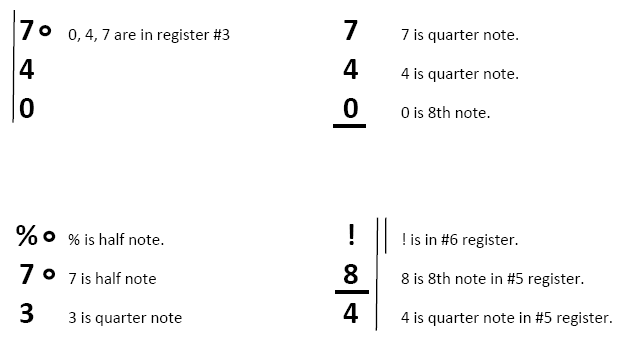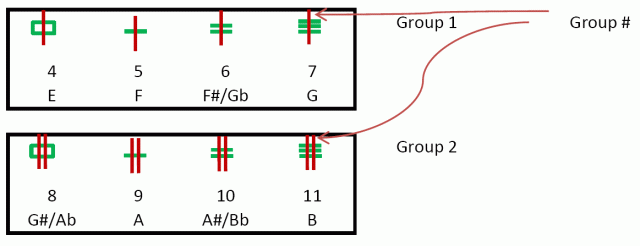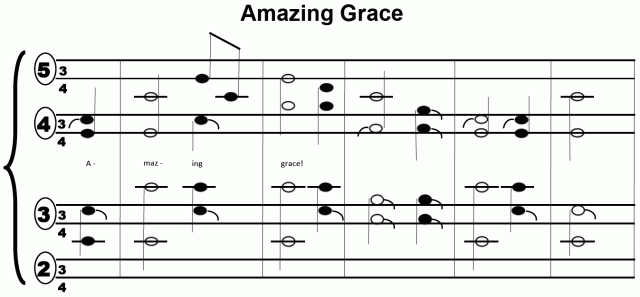12Digits
C.J. Wang
Description
12Digits is a variant of Numbered Musical Notation (NMN), which has been widely used in China for over 100 years. NMN has movable ‘1’, which is defined at the beginning. In contrast, 12Digits uses absolute ‘1’ and extends from 7 to 12 notes. There are several other changes which will be pointed out below.
Pitch
How to represent 10 and 11 is a hard decision to make. I chose ‘%’ for 10, ‘!’ for 11 since ‘%’ looks like 010 and ‘!’ can be imagined one over one. I considered using ‘&’ to represent 11. But ‘&’ is hard to write. If two symbols are allowed, I propose to use ‘0 or /0 and ‘1 or /1 instead of 10 and 11 since it is clear when you see 10, which means 1 and 0.

Duration
The little circle denotes a double duration, which is my own idea. NMN uses ‘-‘ to express repeat, e.g., “% – -” meaning “% % %”. 12Digit still keeps the use of ‘-‘ though. As for rest, 12Digit uses ‘~’ instead of ‘0’ since ‘0’ is not available.

Register
NMN uses dots under or over digits to indicate registers. I use vertical lines to denote registers, which saves a lot vertical space over dots.

Chord
Each note has its own duration and register symbols in a chord, which is different from NMN.

Private Duration vs. Public Duration
Private duration applies to individual notes while public duration applies to a group of notes.
 Private Register vs. Public Register
Private Register vs. Public Register
Private register applies to individual notes while public register applies to a group of notes.

A sample

 The following figure helps to understand how the numbers (4-11) are composed of: adding group number to base numbers (0-3).
The following figure helps to understand how the numbers (4-11) are composed of: adding group number to base numbers (0-3).






























